The newly elected doge, before he was presented with the corno ducale in the Palazzo Ducale, was carried around the Piazza San Marco in the pozzetto, while money was thrown to the people.
The people with red caps are the arsenalotti, workers from the Venetian navy docks.
Source: Gli abiti de veneziani di quasi ogni età con diligenza raccolti e dipinti nel secolo XVIII, by Giovanni Grevembroch (1731–1807), which in four volumes contains over six hundred watercolours of how Venetians dressed in the 1700s.
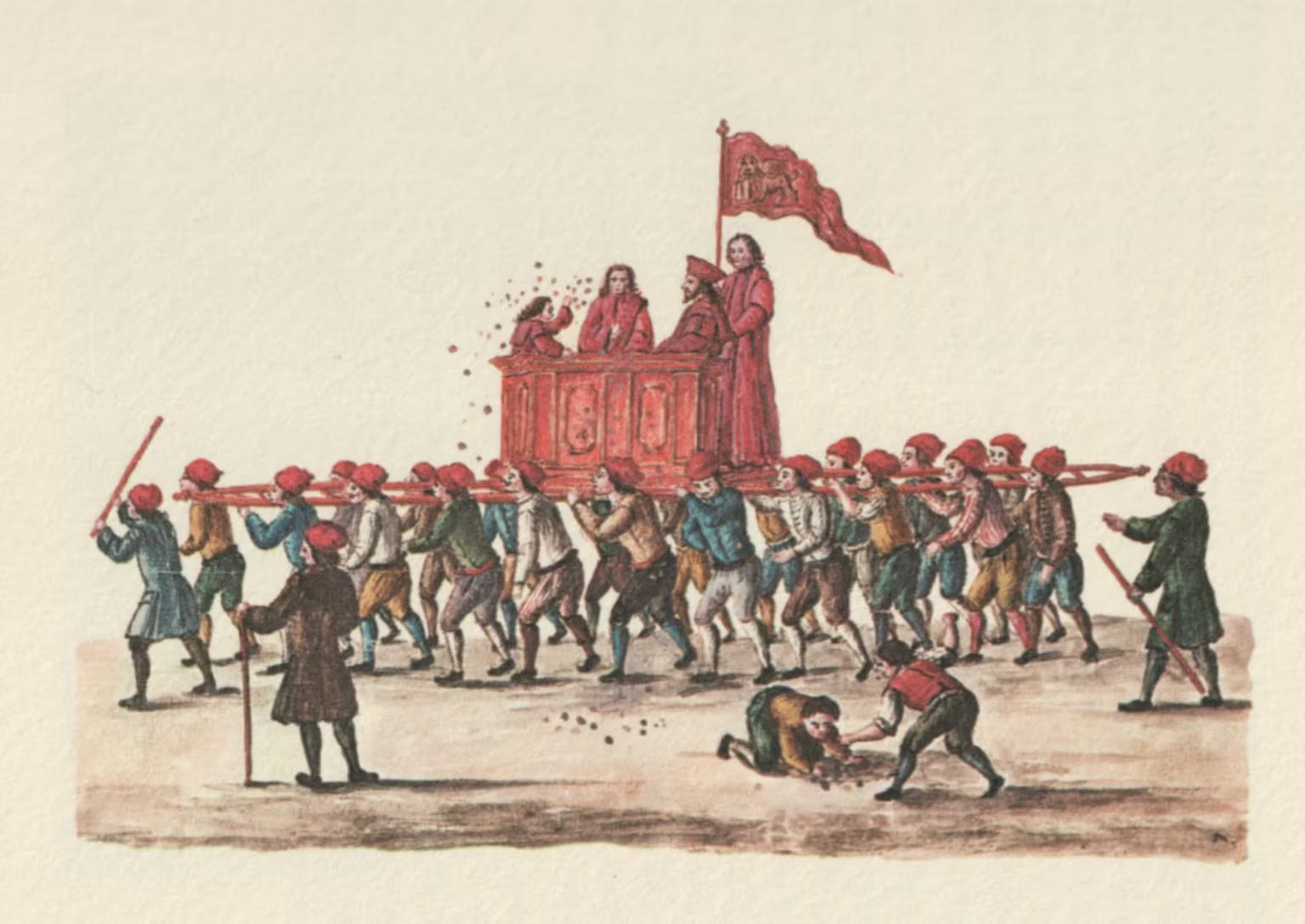
Mysterious Liberality
Once the Prince has been created according to the ceremonial regulations,1 he is announced to the People, and given the oath of things, which he must observe, and together with the Standard, he ascends the Galley, or Pergolo, or Bigonzo2 whatever it is called, where, dressed in the Dogalina with the Beret, he is carried around the Square by the Men of the Arsenal, and throwing money to the People, he is then taken to the Palace where the government is handed over to him, and crowned he is seen. The coin he spreads is of his own money, unlike in ancient times, when this was marked with the name of the Antecessor, nor were more than five hundred ducats allowed to be drawn. The first who availed himself of such generosity was Sebastiano Ziani in the year 1173,3 perhaps because he doubted the usual tumult of the plebs, or to imitate the custom of the Greek emperors. Ziani was, on the other hand, of placid genius, and rich beyond measure, so that after the usual Banquet to satiating the Crafts of the City, he wanted to add new benefices with a liberal hand.
The bearers did not use the red beret, so Francesco Morosini,4 the victorious prince, was the first to confer it, when he performed this ceremony in the year 1688.
To His Excellency Mr. Domenico Grimani, Brother of His Serenity,5 in recognition of the continued pity granted to our poor creations.
Translator’s notes
- The entire process of electing and creating a doge is described in detail in Doge — Lessico Veneto. ↩︎
- The box the doge is standing in was also called the pozzetto, which means a well-head, but as always, a dear child has many names. ↩︎
- Sebastiano Ziani was elected doge in 1172, not in 1173. ↩︎
- Francesco Morosini was one of the greatest Venetian admirals. He was doge from 1688 to 1694. ↩︎
- This must be Pietro Grimani (doge 1741–1752). ↩︎
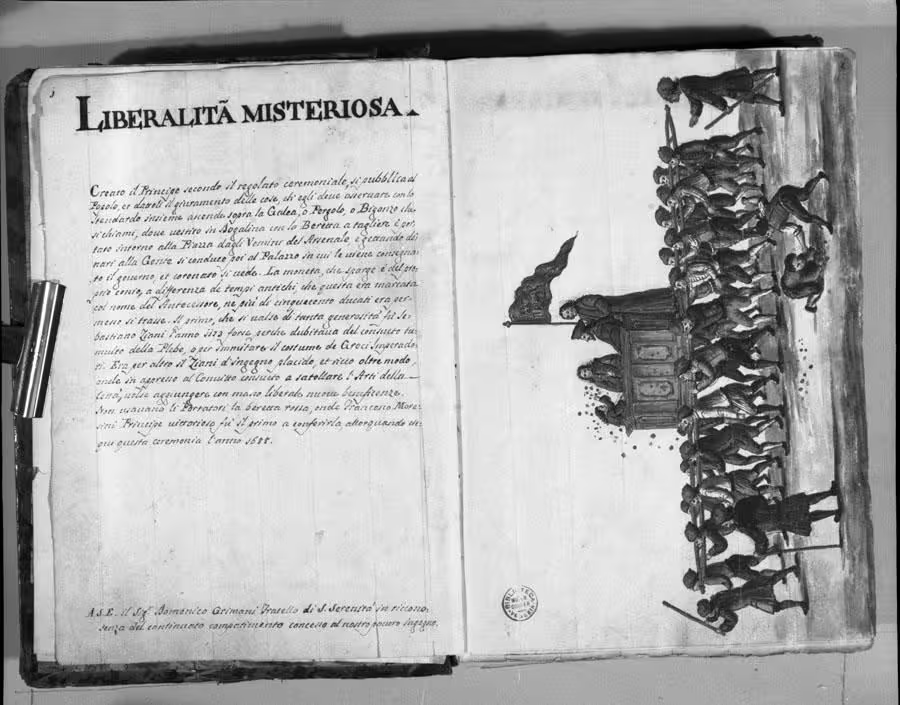
Original Italian text
Liberalità Misteriosa
Creato il Principe secondo il regolato ceremoniale, si pubblica al Popolo, et dattoli il giuramento delle cose, ch’egli deve osservare con lo Stendardo insieme ascende sopra la Galea, o Pergolo, o Bigonzo che si chiami, dove vestito in Dogalina con la Beretta a tagliere è portato intorno alla Piazza dagli Uomini del Arsenale, e gettando dinari alla Gente si conduce poi al Palazzo in cui le viene consegnato il governo, et coronato si vede. La moneta, che sparge è del proprio conio, a differenza de tempi antichi, che questa era marcata col nome del Antecessore, ne più di cinquecento ducati era permesso si trasse. Il primo che si valse di tanta generosità fù Sebastiano Ziani l’anno 1173 forse perche dubitava del consueto tumulto della Plebe, o per immitare il costume de Greci Imperadori. Era per altro il Ziani d’ingegno placido, et ricco oltre modo, onde in appresso al Convitto consueto a satollare l’Arti della Città, volse aggiungere con mano liberale nuove beneficenze.
Non usavano li Portatori la beretta rossa, onde Francesco Moresini Principe vittorioso fù il primo a conferirla, allorquando eseguì questa ceremonia l’anno 1688.
A S.E. il Sig.r Domenico Grimani Fratello di S. Serenità in ricconosenza del continuato compatimento concesso al nostro povero ingegno.
Grevembroch (1981), vol. 4, p. 1.
Related articles
Bibliography
- Grevembroch, Giovanni. Gli abiti de veneziani di quasi ogni eta con diligenza raccolti e dipinti nel secolo XVIII, orig. c. 1754. Venezia, Filippi Editore, 1981. [more]
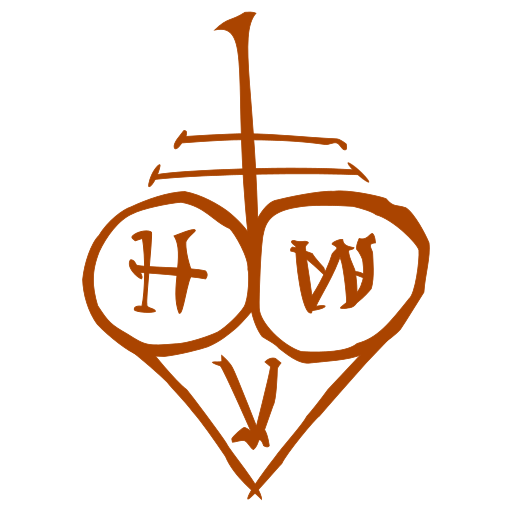

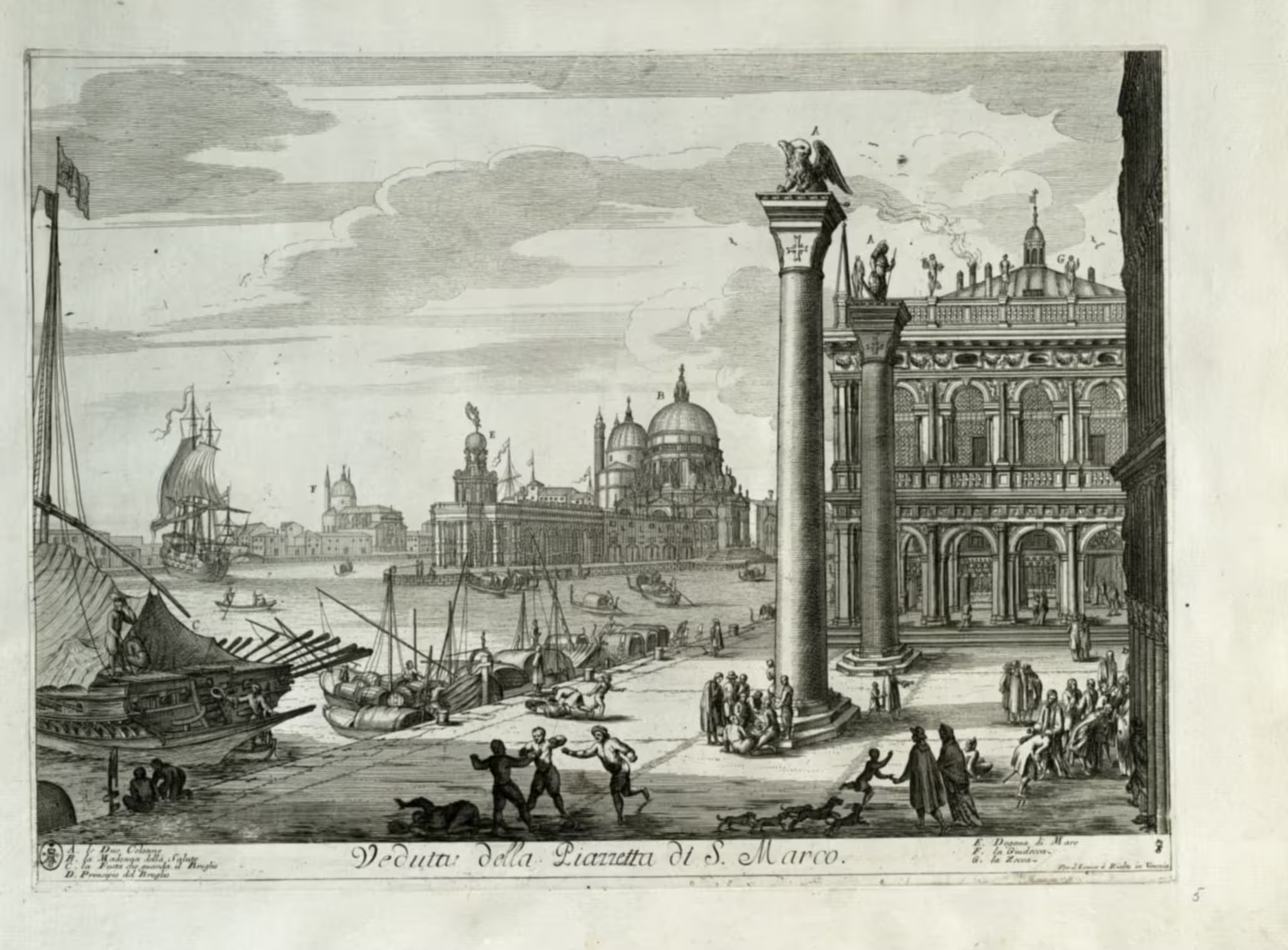
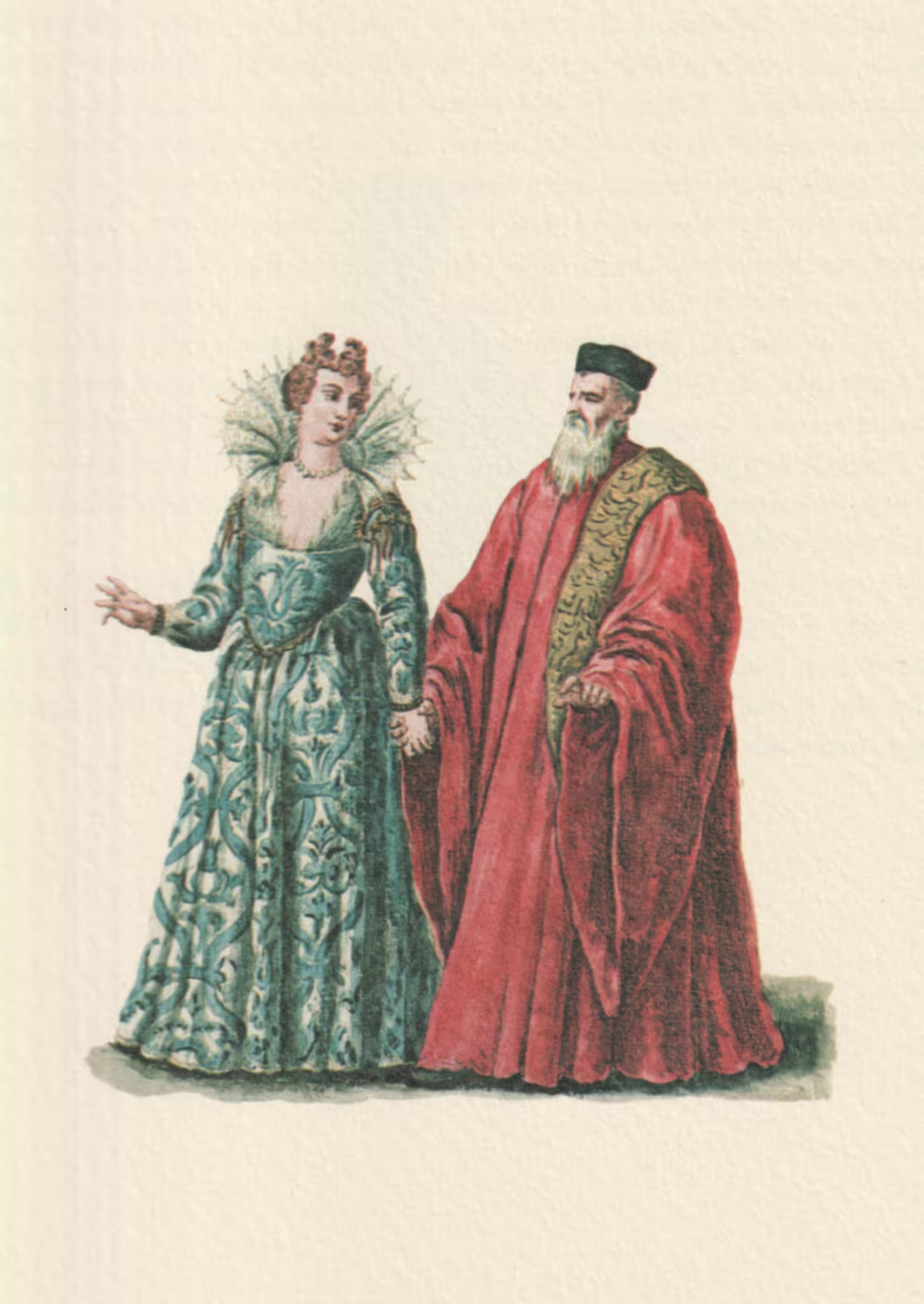
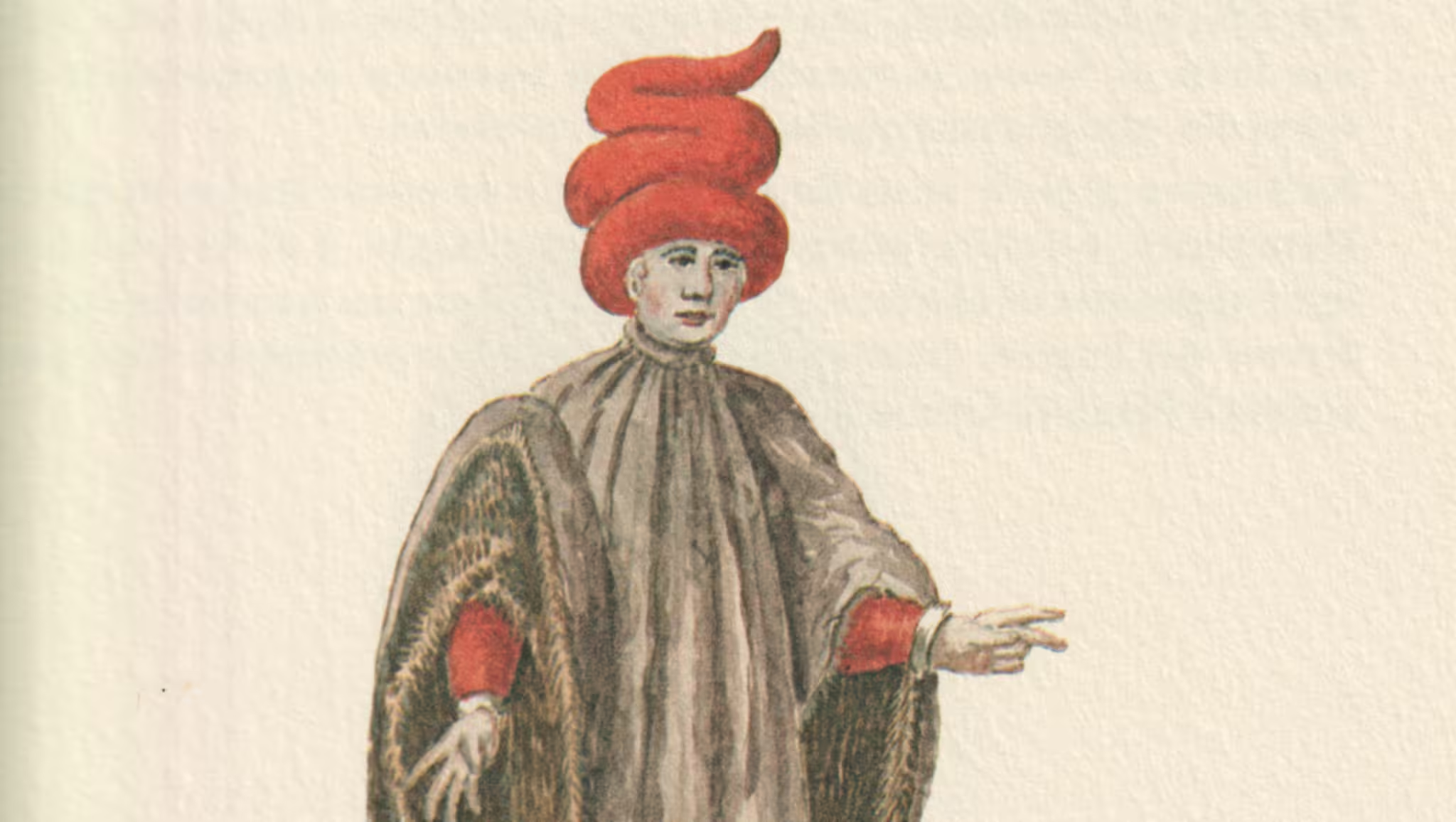
Leave a Reply